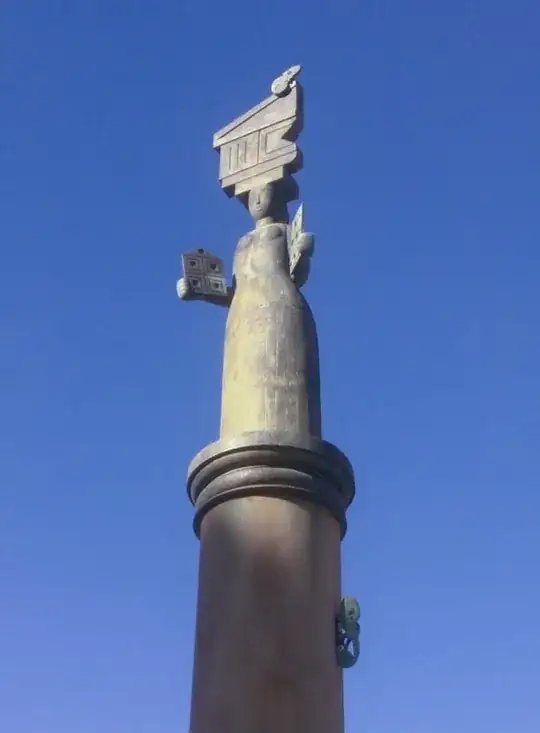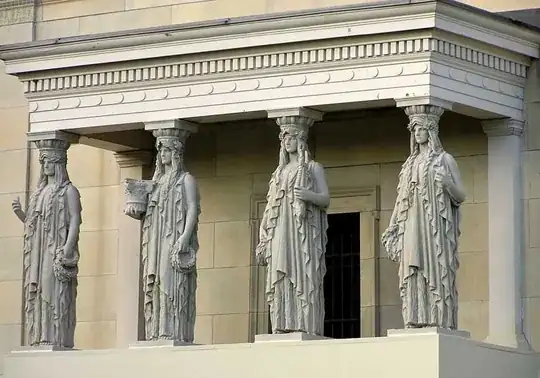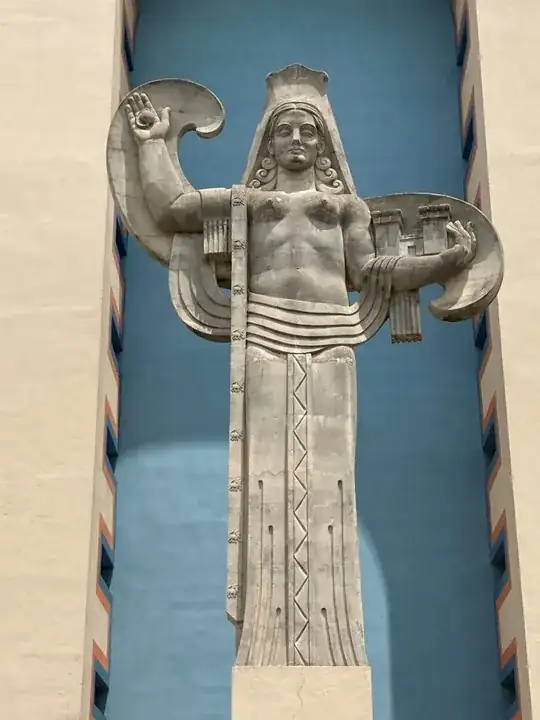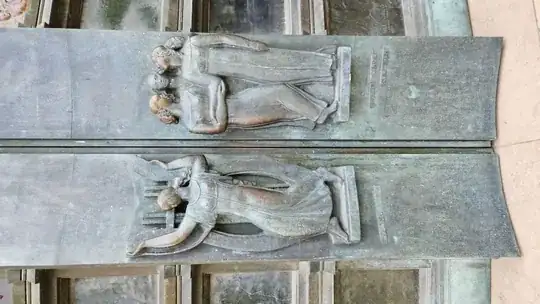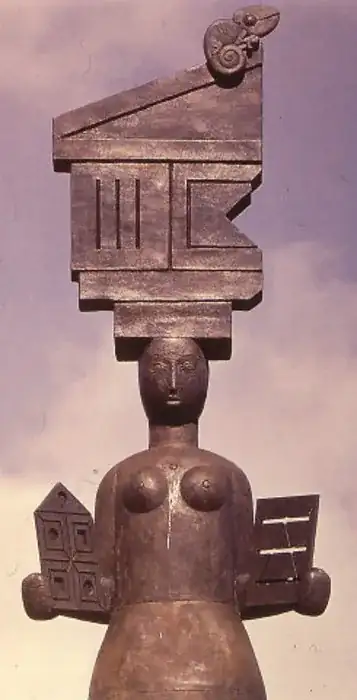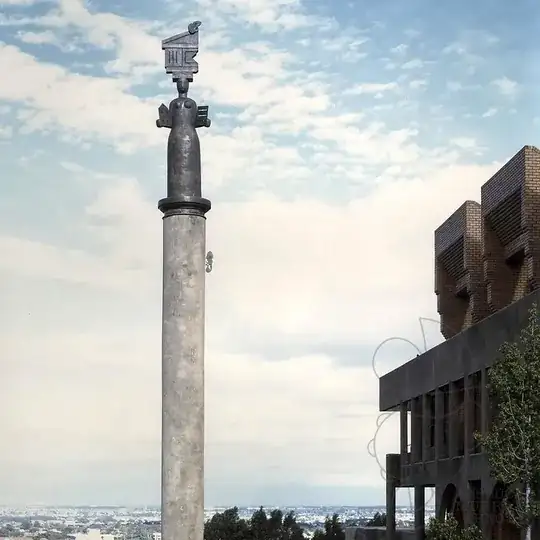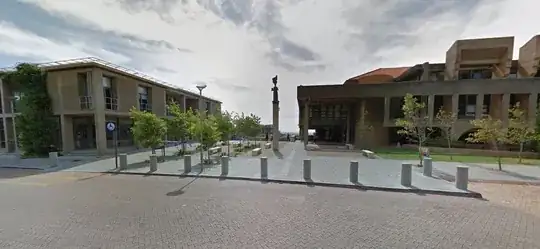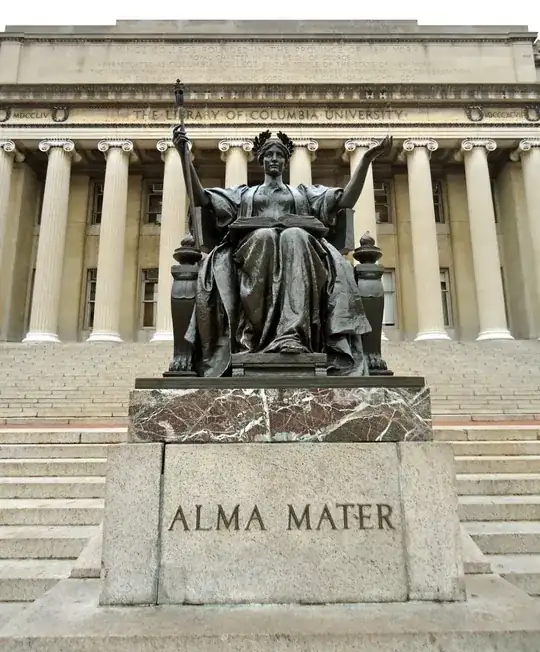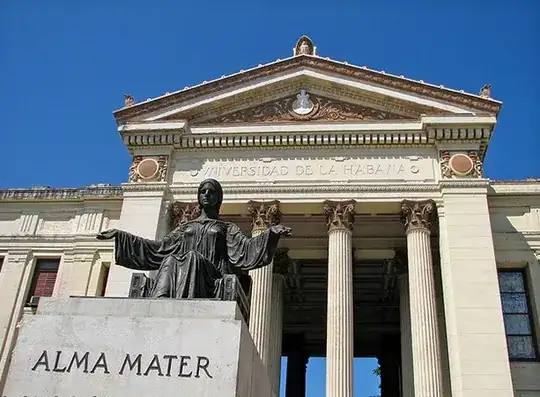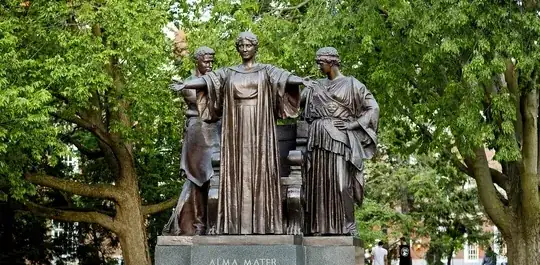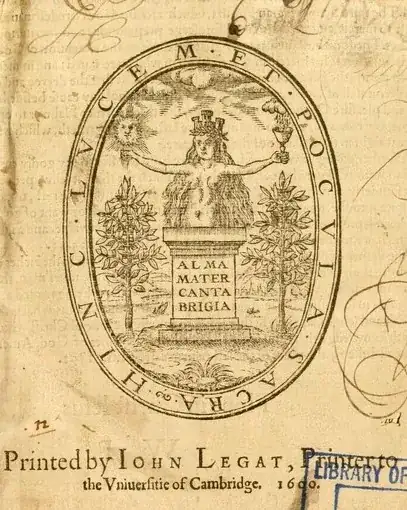On top of a pillar that was about two or three storeys tall, I once saw this sculpture of a woman looking out toward the woods of Devil's Peak on Table Mountain in the City of Cape Town. This being nearly a decade ago, I'm somewhat fuzzy on the particulars, but I think the pillar was somewhere behind the Chancellor Oppenheimer Library at a spot close to Madiba Circle. Whatever the exact coordinates are, this is (or was) on the Upper Campus grounds of the University of Cape Town.
As with a sculpture group on 100 Broadway, New York, NY, in another Question, I was inclined to expect that this is one of the nine Muses from Greek mythology. The style is not Classical Greek like with the sculptures in New York, but certain elements seem to allude to Ancient Greek statuary, in particular how the woman appears to be a caryatid who has separated from a colonnade whose only remaining portion currently is the column on which she stands and, on her head, the edge of roof that she might once have supported.
The Buffalo Architecture and History website interprets these caryatids (above), sculpted by Augustus Saint-Gaudens, and appearing at the Albright-Knox Art Gallery in Buffalo, NY, as four of the Muses. The solitary stylite-like figure on UCT's Upper Campus is carrying a tablet (or something similar to one) in each hand, the one in her right looking somewhat like a little house. The second-leftmost of Saint-Gaudens' art gallery Muses is holding up a column capital in her right hand, and she is entitled Architecture.
The claim is widespread online, with no clear source that I could trace, that Thaleia, the Muse of comedy and bucolic poetry, is somehow also responsible for architecture, among a few other sciences. Maybe both Saint-Gaudens' Architecture, and the Upper Campus pillar-top, are Thaleia.
One reason not to expect the Upper Campus sculpture to be a Muse is that none of these nine sisters seems to ever appear holding two objects, one in either hand, quite so symmetrically, but of course an artist may well take license by changing up such aspects of representation. The point, nonetheless, is that this makes it that much more difficult to identify the figure along the aforementioned lines, in the absence of further detail on the sculpture.
I'm also fascinated by the chameleon poised at the very top of the statue, hanging out on the piece of roof with which the woman is crowned. Then there's an even bigger chameleon making its way up the pillar towards the woman. What's up with them? Maybe the sculpture is not trying to reference Greco-Roman myth and, with this being in South Africa, perhaps is rather inspired by local legend and folklore. I'd be even more stumped as to her identity if that's the case.
My next best guess would be to assume that she's merely some sort of allegory, as there often tend to be in buildings of government institutions and other organisations, especially Western or Westernised ones. Maybe the woman is a personification of the City of Cape Town, or of the university.
The design style looks a touch like Lawrence Tenney Stevens' 1936 sculpture personifying the flag of Texas under Spanish rule, in Dallas's Fair Park.
This lady undoubtedly is holding up a miniature building. I have no idea how old the Upper Campus art-piece is, nor who the artist is. (I did look up whether Stevens might have done any work in South Africa but, from what I could see, he never went there.)
Sidenote
The subject of statuary on UCT's Upper Campus has been a matter of fiery controversy since 2015, when a decades-long series of student protests aimed at the removal of a statue commemorating Cecil Rhodes reached its crescendo. This 1934 statue sat surveying Middle and Lower Campuses, and the city beyond, from its perch at the foot of a large flight of stairs leading in the direction of the library and the pillar lady that I'm asking about.
All my current/recent searches involving statues or sculptures in connection with Upper Campus specifically, or UCT in general, invariably led to this topic. I do not think the pillar lady has any connection to the Rhodes monument or any of the furor surrounding that, except in terms of them both being sculptures planted on the same premises. (I might be wrong about that too, though.)
